The veteran quarter-finalists stuck to their game plans on Friday at the Yonex Australian Badminton Open Grand Prix Gold and while many found success, it was Sho Sasaki, and not Indonesian legend Taufik Hidayat, who took the most anticipated match of the day.
By Aaron Wong, Badzine Correspondent live in Sydney. Photos: Andrew Greenway, Courtesy of Badminton Australia (live)
Sasaki Sho(wed) Taufik
Sho Sasaki is stout and in every way resembles a real-life anime hero, which must be part of the reason he was able to endear himself to Sydneysiders who had turned up Friday to witness instead one of the most famous badminton players of all time, his opponent of the day, Taufik Hidayat.
Sho’s heavy outright winning smashes were admired, applauded, and awed at as he romped through the first game, scooping it 21 -11.
Apart from his backhand, Hidayat possess amazingly superior centre of balance for a badminton player but tonight he met his match in that department.
The Indonesian, as all experienced players and geniuses do, learnt quickly and found his sharper game in the second but in terms of both inspiration and perspiration he had a little less than the Japanese man on the day and coasting on talent alone took can only take you as far as 20 points. It is what extra you are able to summon to try and win one or two consecutively right then that counts.
Hidayat gifted a match point to the defending champion when he framed the most routine of backhand blocks, scaring the crowd in the process, only to seek forgiveness straight away with a drive rally ending in a lethal backhand midcourt kill that made the crowd overjoyed as he levelled the scores.
Hidayat was unable to wrestle the second game that he desperately needed, using his defensive game against Sho’s by now confident smashes. The final point was a drive rally which the left-handed Japanese ended with a graze to slow the shuttle down and make it die around the Indonesian’s forehand forecourt.
“I felt no pressure for today’s match. Pressure was on my opponent instead [being crowd favourite and famous]”, revealed the Japanese hero.
There is no need to excuse Hidayat for getting old because Sasaki is just 10 months younger.
A paradox for the ages
He never smiles but Chen Jin (pictured top) is a significant crowd magnet whenever he passes through the public areas and makes no attempt not to. He quietly and graciously always pauses to pose for a photo request with anyone.
This week he has been enthusiastically challenged by lower ranked players Lin Hsien Yu of Chinese Taipei and Takuma Ueda of Japan.
When asked whether tackling young upstarts is like playing a younger version of himself – since he was known back then as “the next big thing” in badminton – the two-time World Junior Champion (2002, 2004) and World Champion (2010) brushed off the comparison: “No, I don’t think it is the same. The young players are not especially explosive in their attack.”
Indonesia’s Simon Santoso was equally unworried when surveyed after being stretched by 7th-seeded Korean Shon Wan Ho 21-15, 12 -21, 21-10 in 54 minutes.
“I have been playing international badminton a long time. I have a lot of experience. It’s okay. [They are] manageable,” said Santoso, before also admitting that today’s match was “hard, much harder [than earlier ones]”.
So, Chen Jin and Simon Santoso, the two youngsters who did become “the next big things”, and have been as high as the top 3 in the world, shall clash in a very appealing semi-final of distinctly classic Chinese versus Indonesian singles styles.
Mixed doubles lesson from the pros: On dealing with pressure
Japan advanced with two mixed doubles semi-finalists on either side of the draw. Shintaro Ikeda / Reiko Shiota had beaten Korea’s Kang Ji Wook / Choi Hye In 21-15, 22-20.
“At 20-20, there is no one definite attack or play safe plan for every occasion. You have to assess it case by case,” Ikeda explained. “What you do is do what has been working up to help you get there.”
Shiota, a Maria Sharapova-like cover girl for the badminton world, gave all youngsters the benefit of her experience by extending on what her partner said, “You mustn’t lose your nerve at critical points, you cannot not go for your shots whether you choose to be defensive or aggressive.”
The Japanese meet Malaysia’s Chan Peng Soon / Goh Liu Ying for a bout on Saturday. Of their own impressive, also straight-game quarter-final win over China’s He Hanbin / Bao Yixin, the bubbly Malaysians remarked “There’s no pressure for us to do well because we are Malaysia’s only (highly ranked) mixed doubles pair,” and it obviously helps them bring out their best.
Mixed doubles players can take a leaf out of the book from singles players, it turns out.
Did they glean an important lesson from their recent surprise defeat to world number 1 singles player Lee Chong Wei in a scratch pairing? “He’s our senior, we have so much to learn from him in every way. He’s remarkably skilful. He’s been so good for us [Malaysian badminton], he paves the way,” the pair said interrupting one another with their admiration for Lee.
Men’s doubles: Tortoise and the hare
The sun set on Japan in the last remaining quarter-final match on court on Good Friday. Taiwan’s Fang Chieh Min / Lee Sheng Mu tired out Shoji Sato / Naoki Kawamae after the Japanese pair raced off to snatch the first game. The match ended 17-21, 21-12, 21-14.
This men’s doubles was the ideal remaining match of the day, as the crowd did not leave after Chen Jin won his singles. Sato, the fastest man in world badminton, entertained by leaping from side to side in the beginning stages, thus playing at a pace too hot to handle for his opponents.
The inevitable happened though and, in a classic tale of the tortoise and the hare, come mid second game when Sato was noticeably defending for a while, the Taiwan pair jumped on the attack until they brought the match home.
Nevertheless, there will be a Japanese dawn again as they have provided representatives in all five disciplines for the semi-finals Saturday and no other nation has.
Click here for complete results
![AUSTRALIAN OPEN 2012 QF – Hidayat Halts The veteran quarter-finalists stuck to their game plans on Friday at the Yonex Australian Badminton Open Grand Prix Gold and while many found success, it was Sho Sasaki, and not […]](https://www.badzine.net/wp-content/uploads/Newsflash-thumbnail.png)
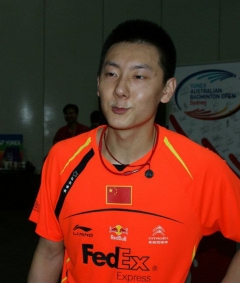

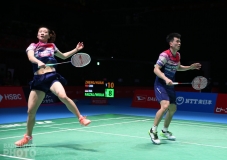
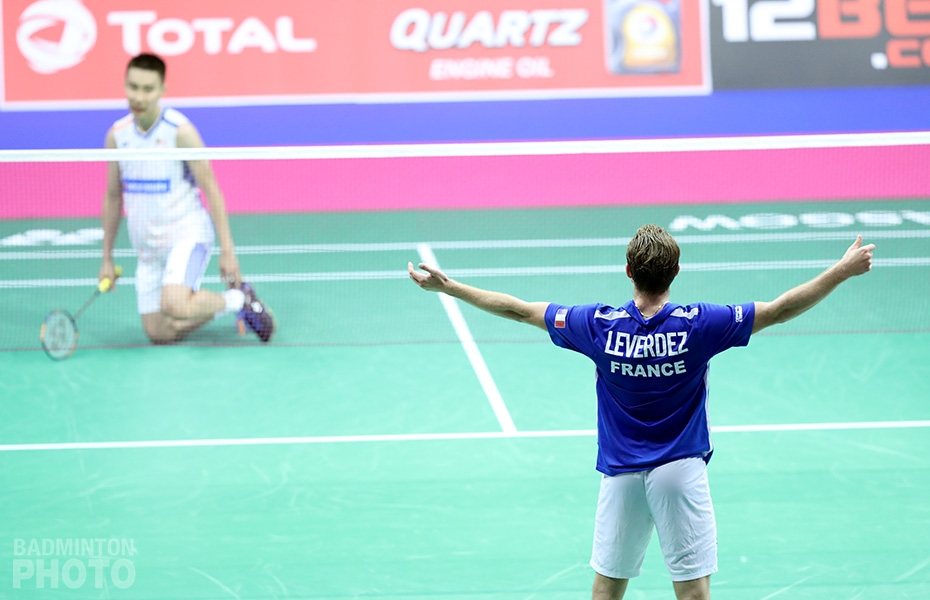
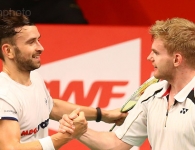
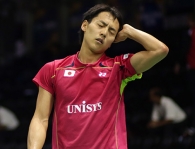
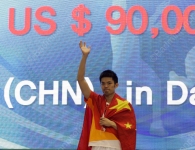
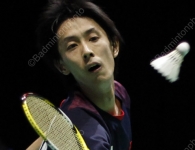
Leave a Reply